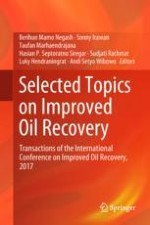2018 | Buch
Selected Topics on Improved Oil Recovery
Transactions of the International Conference on Improved Oil Recovery, 2017
herausgegeben von: Prof. Berihun Mamo Negash, Dr. Sonny Irawan, Dr. Taufan Marhaendrajana, Prof. Hasian P. Septoratno Siregar, Prof. Sudjati Rachmat, Dr. Luky Hendraningrat, Dr. Andi Setyo Wibowo
Verlag: Springer Singapore
